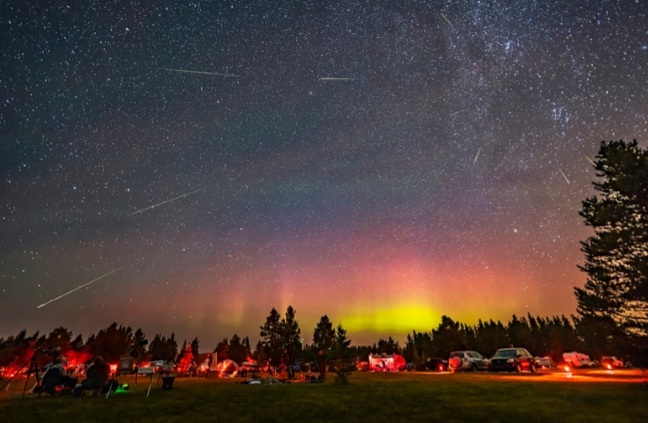**** ENVIRONMENT Canada Release
The Perseids meteor shower
Star light, star bright,
First star I see tonight,
I wish I may, I wish I might,
Have this wish I wish tonight.
Over the next few weeks, peaking on the night of August 11th and before dawn on August 12th, you might get your chance to wish upon a shooting star—thanks to the annual Perseids meteor shower.
The meteors originate from the debris field left over from the Swift-Tuttle Comet. Every year, from June to August, Earth passes through the comet’s trail of debris. The rocks and dust that make up this trail of debris become meteors as they pass through and disintegrate in the Earth’s atmosphere, which we then see as impressive flashes of light. The image below explains the difference between a comet, a meteor, a meteorite and a fireball.
Just before dawn, when we can often see the most meteors, the constellation Perseus is at its highest point in the sky. The Perseids therefore take their name from the constellation since they appear to originate from it.
Perseus carrying the head of Medusa the Gorgon, as depicted in Urania’s Mirror, a set of constellation cards published in London c. 1825. Credit: Richard Rouse Bloxam (designer) and restored by Adam Cuerden.
This year, the meteor shower’s peak comes a few nights after the New Moon, when a thin Moon, or waxing crescent Moon, sets early in the evening. If the sky is clear and without moonlight, you can expect to see up to 50 meteors per hour.
An outburst of Perseid meteors light up the sky in August 2009 in this time-lapse image. Source: NASA/JPL.
The best way to see the meteor shower is to move as far away as possible from the city or streetlights. Remember to keep all electronic lights off.
Note: it takes roughly 30 minutes for your eyes to fully adjust to the night sky.
Visit our Astronomy web site to get access to up-to-date weather forecasts in order to determine the best time to plan your sky observation activities.




